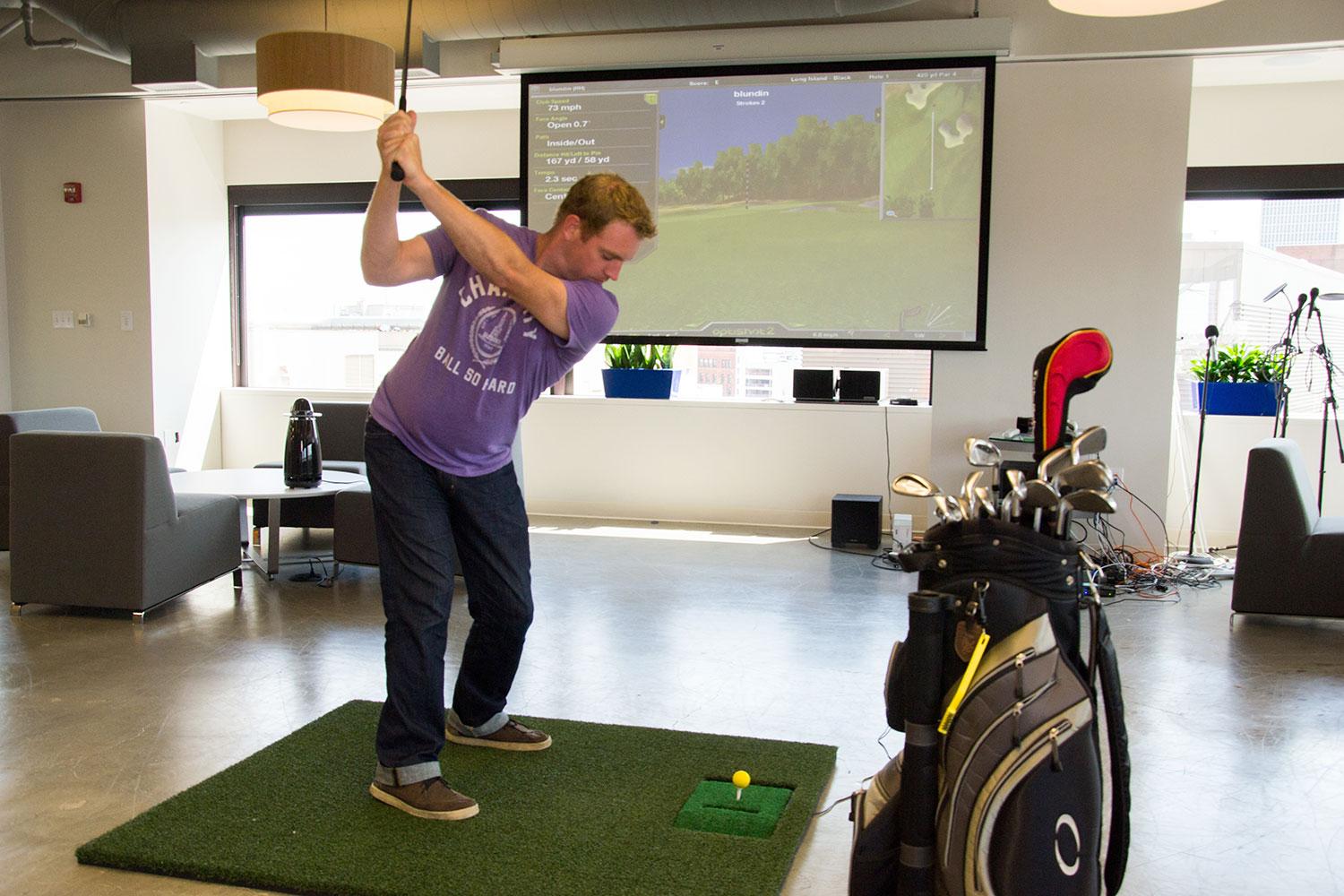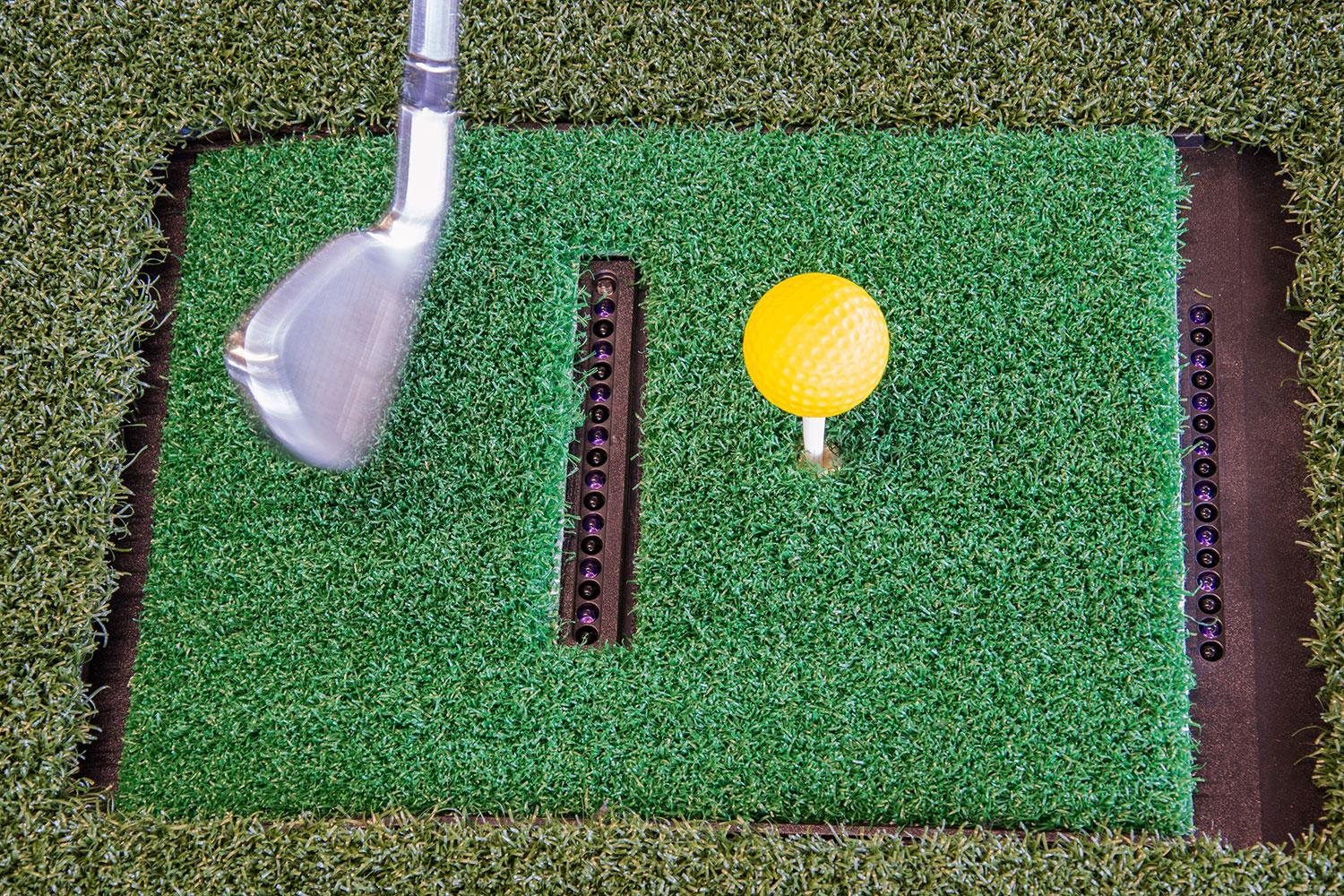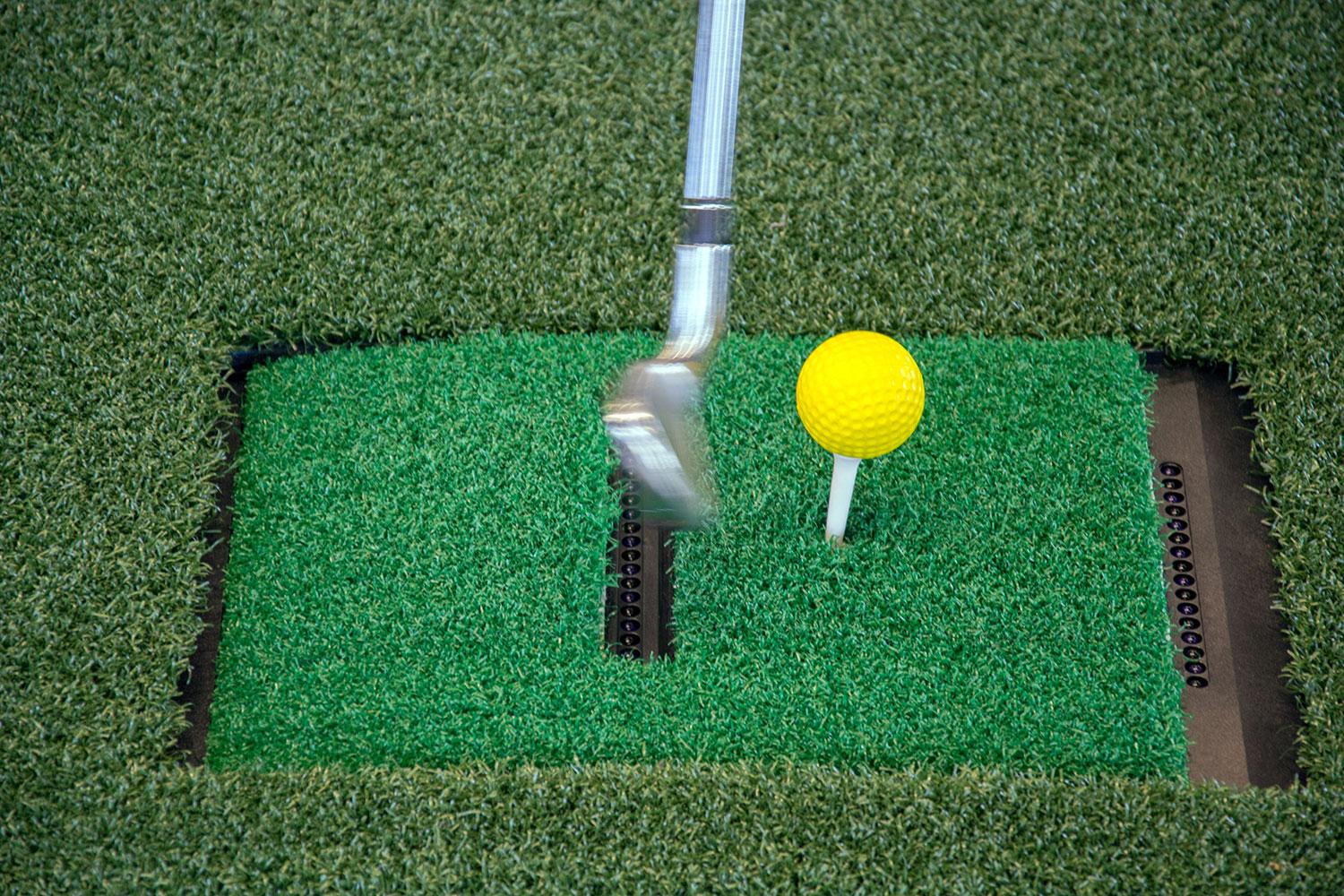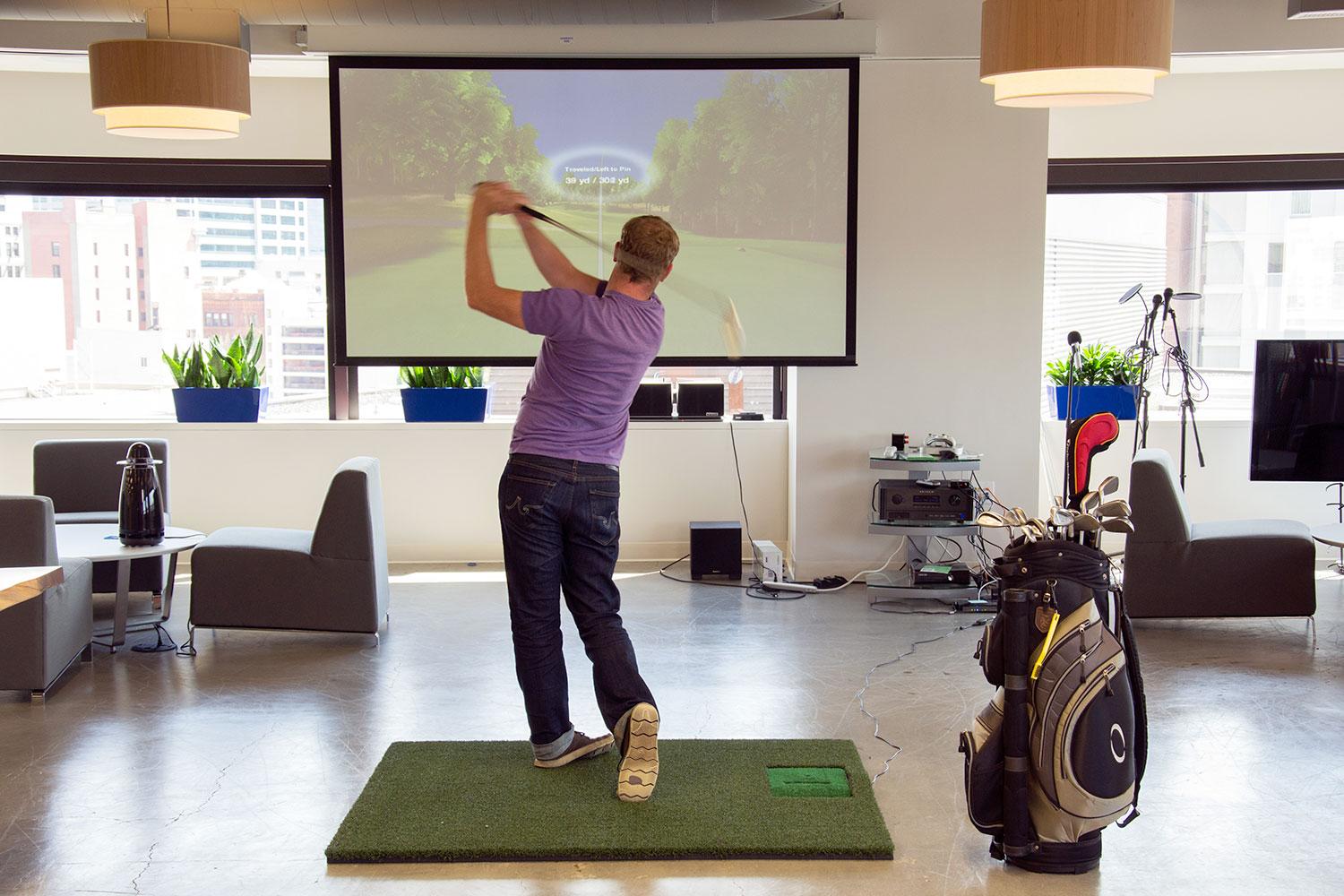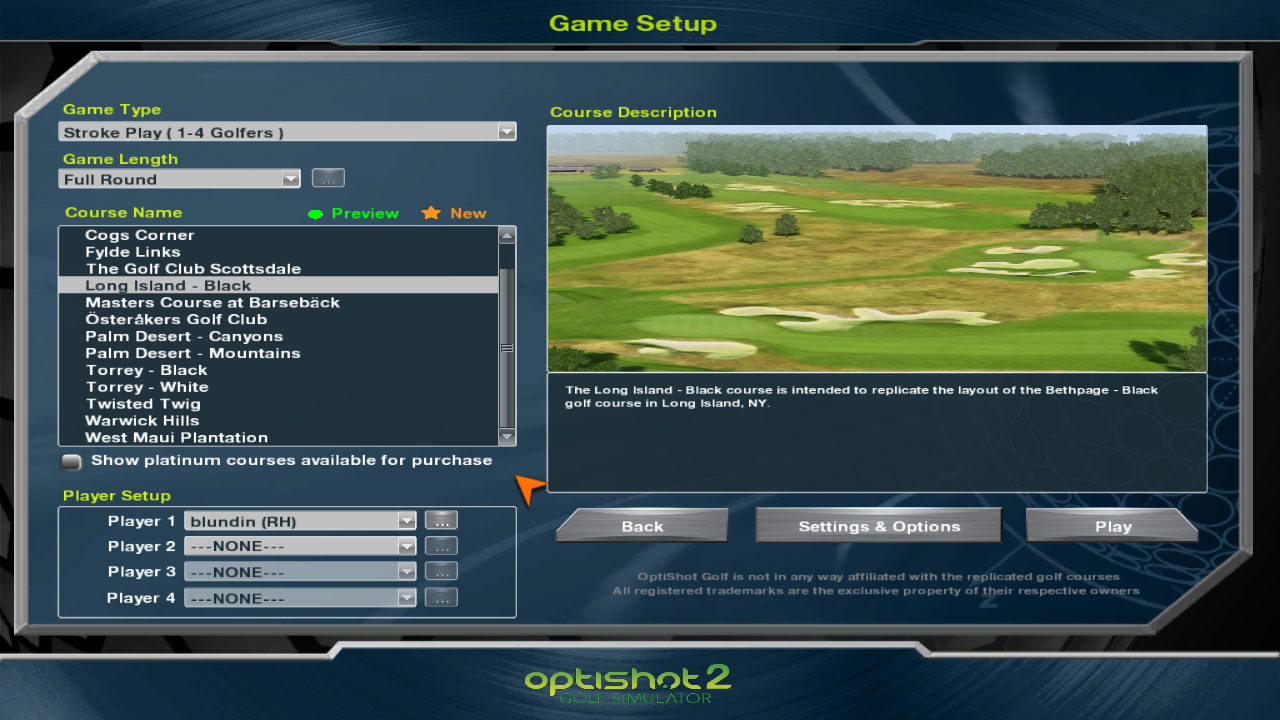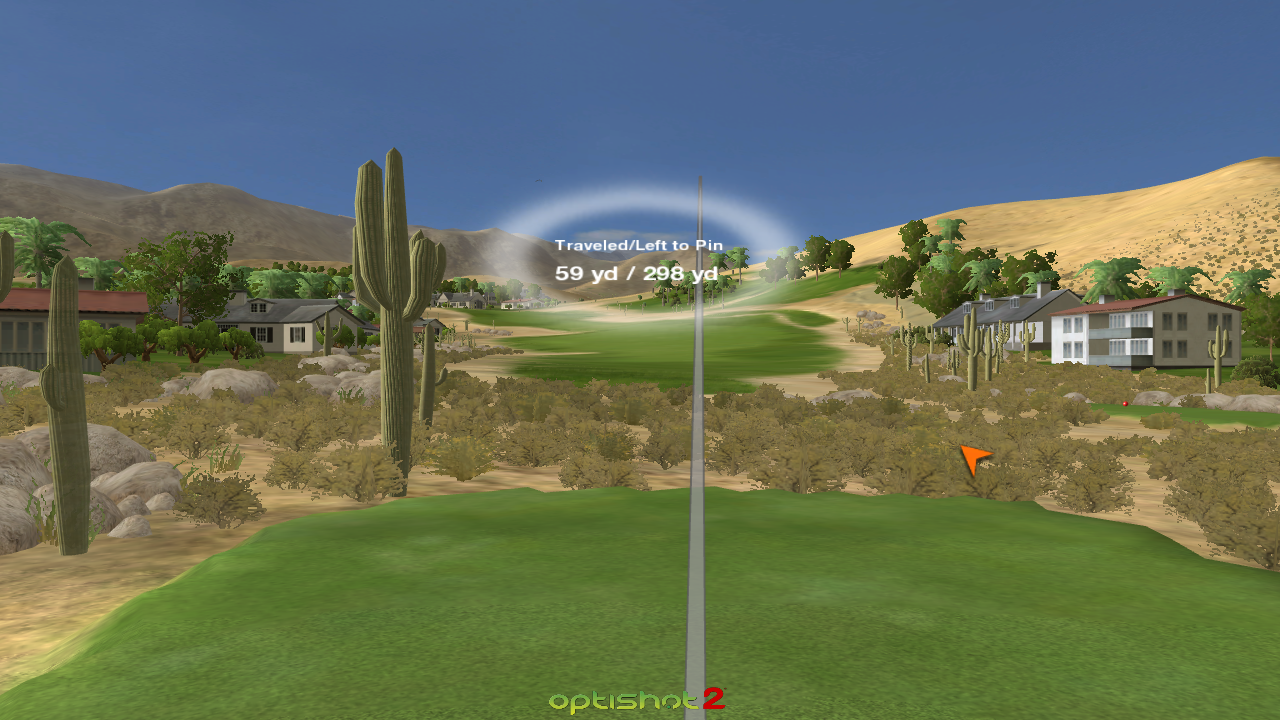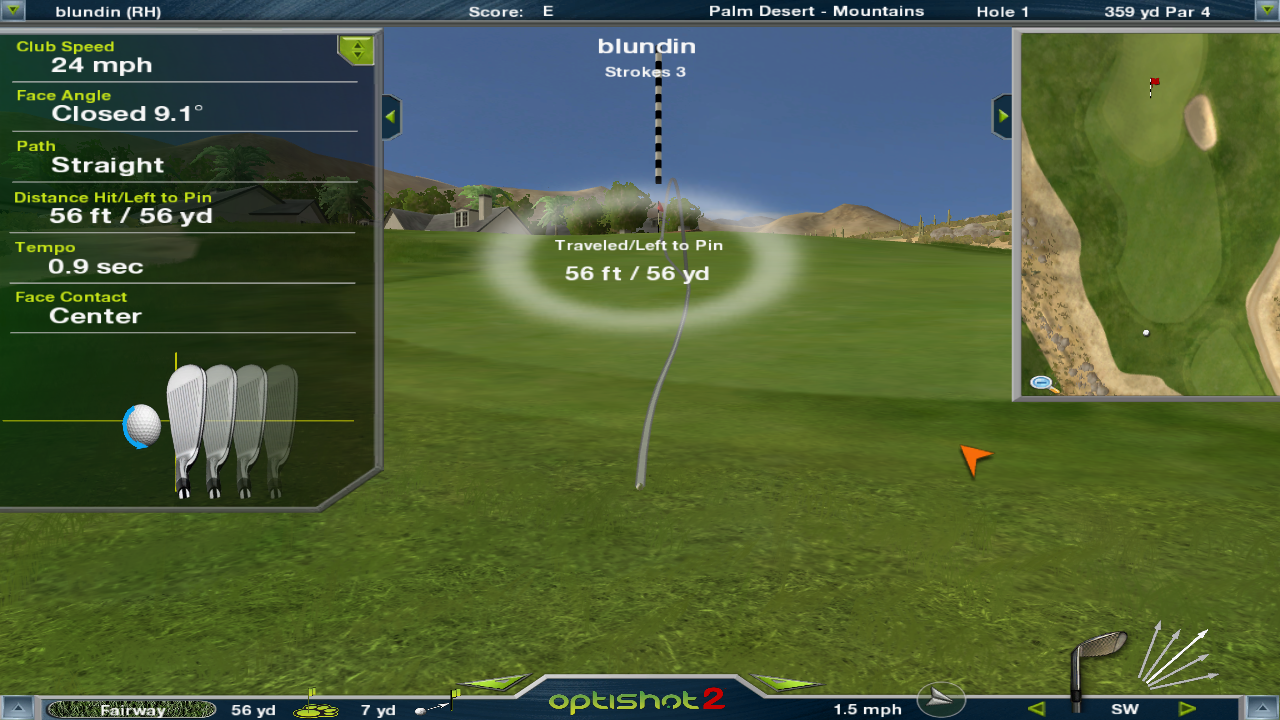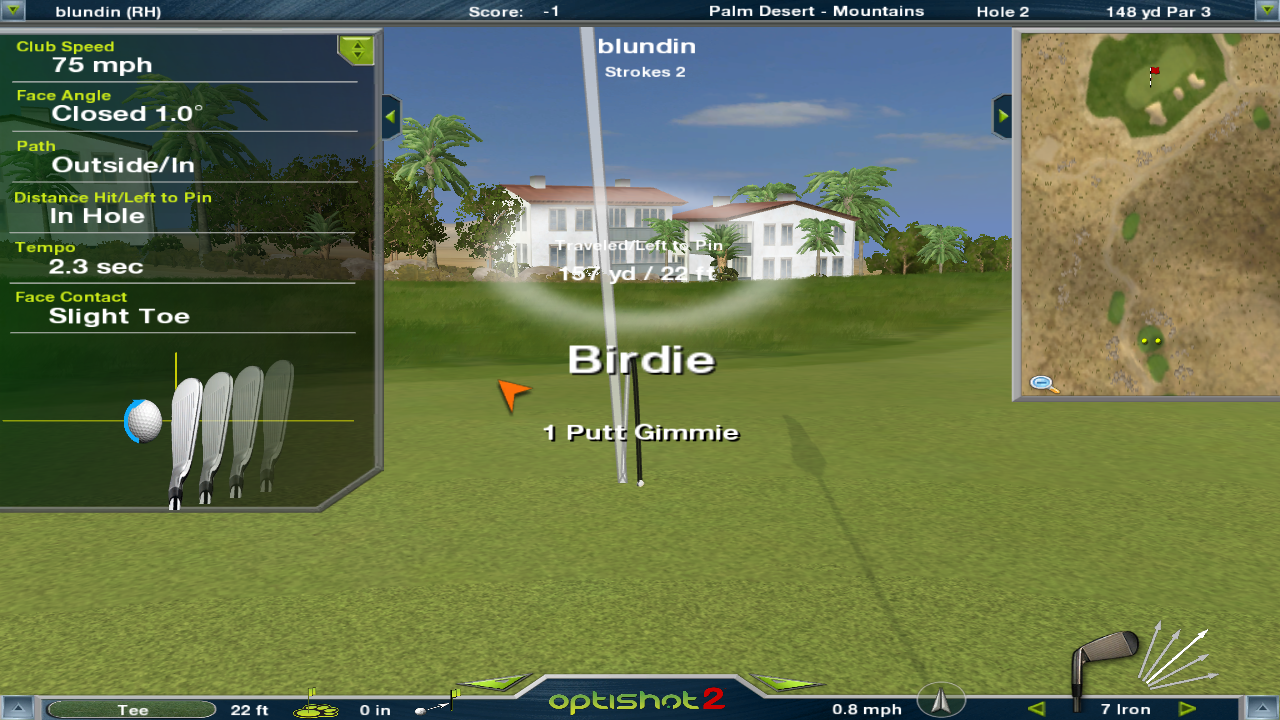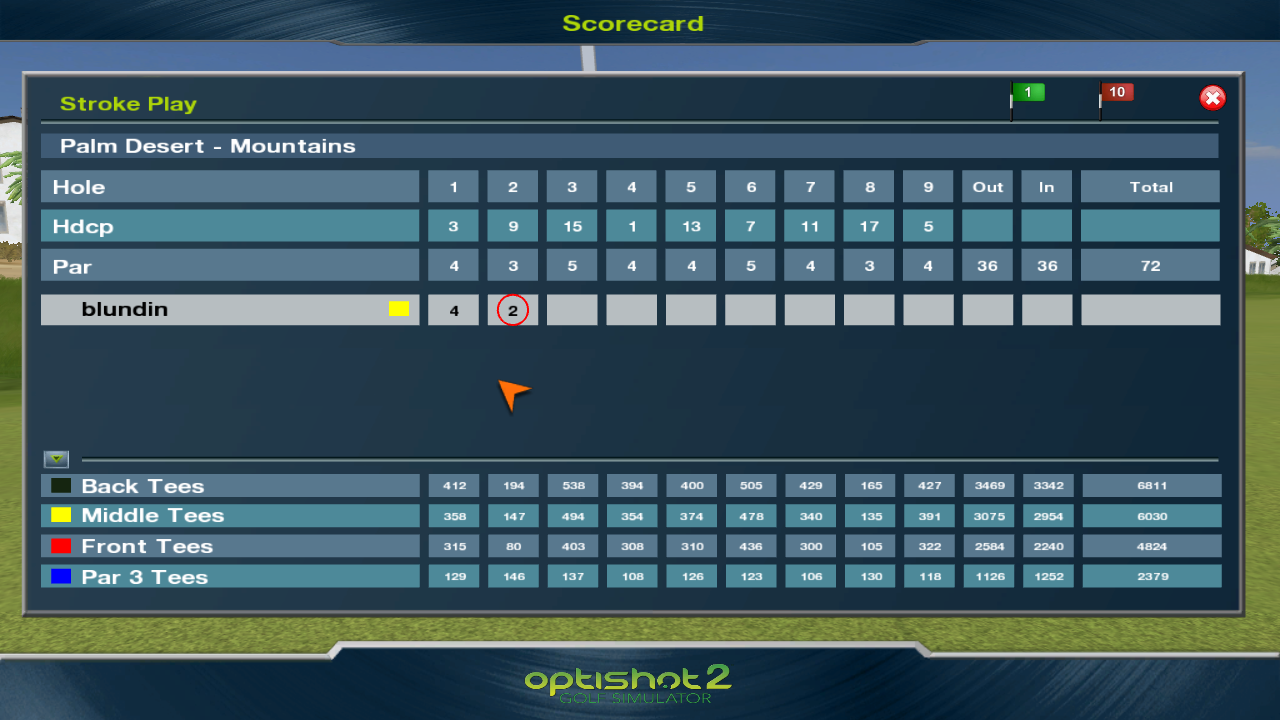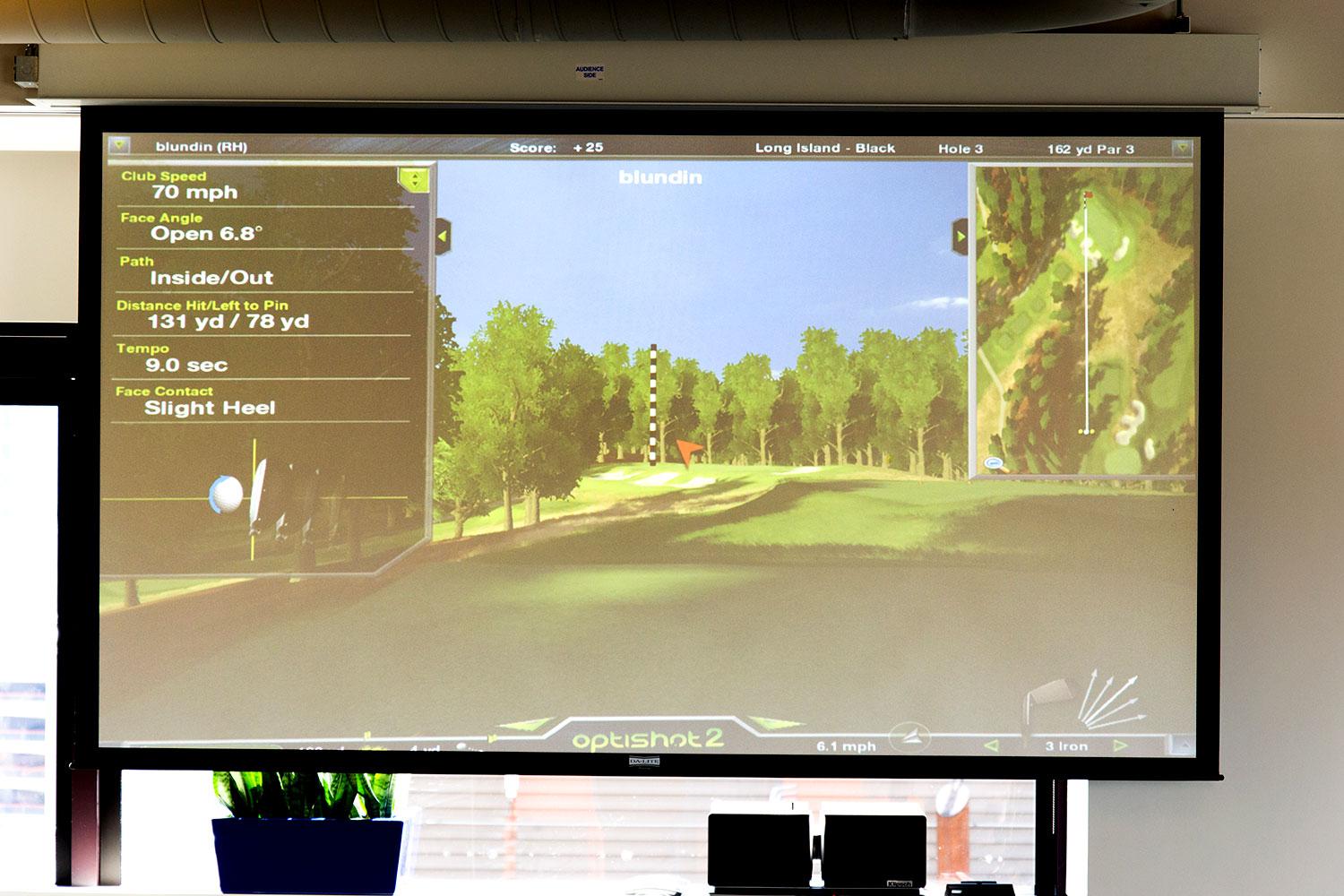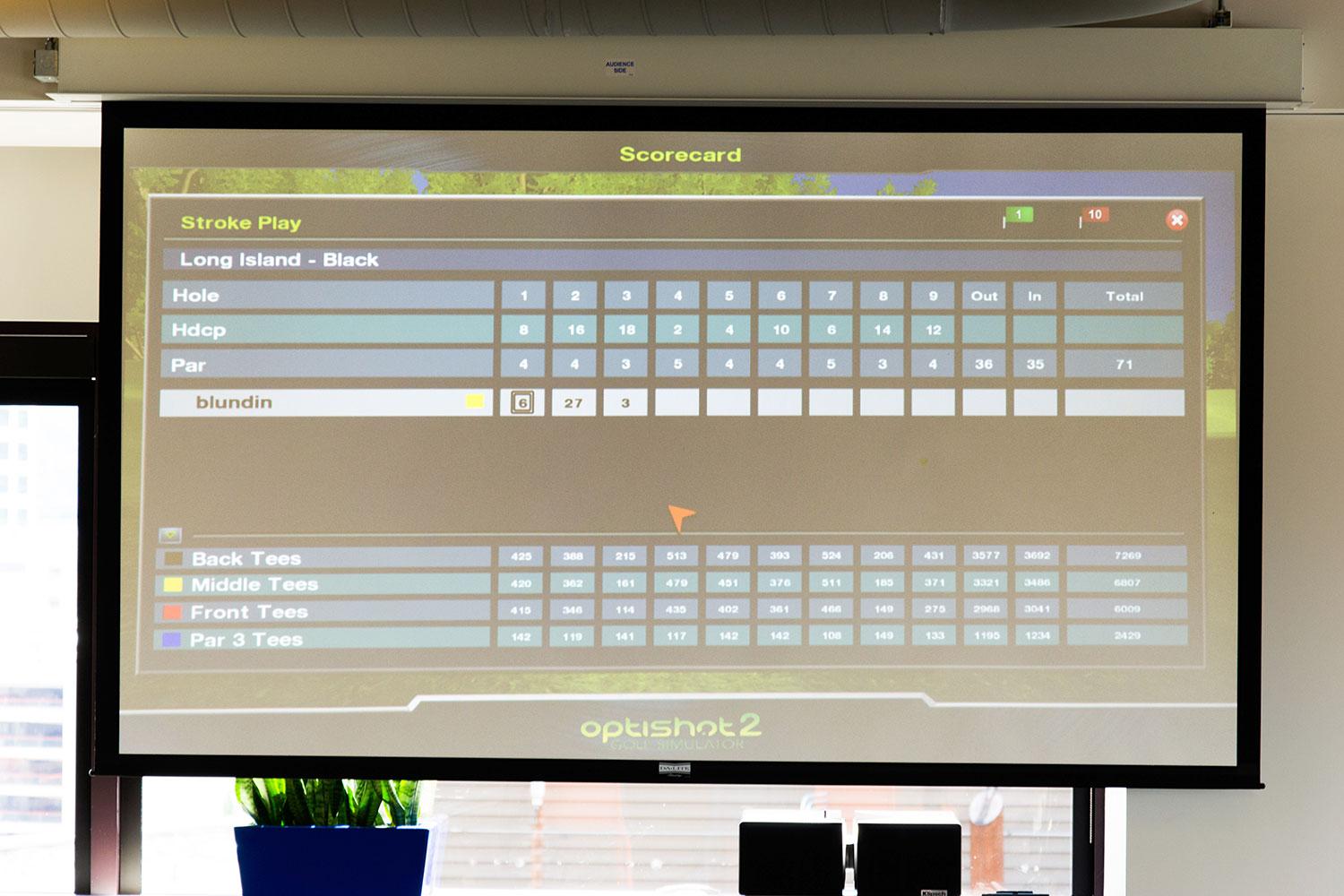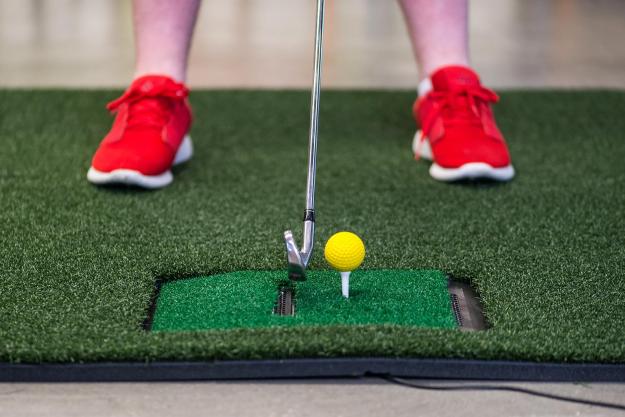
“For a duffer watching dollars, Optishot does a decent job recreating the links.”
- Excellent for shot shaping and iron conditioning
- Wide variety of detailed famous courses
- Multiple game modes and reliable online play
- Seemingly indestructible construction
- Technical limitations mask mistakes in your swing
- Short game is unreliable
- Lots of extra gear required. And additional courses? $30 each
For a low-tech game involving a stick, a ball, and a stroll in the sunshine, golf simulators get high-tech real quick. Optishot 2 is far from the technology featured in advanced training tools with military-grade Doppler radar systems such as Trackman — which runs up to $19,000. At $499 it forgoes the kaleidoscope of microwaves in favor of simplified tracking software built into two grounded rows of 48MHz infrared sensors that fire at thousands of pulses per second.
This means the Optishot 2 will tell you a few basic things: your swing speed, club path, face angle, estimated face contact, and the resulting shot shape, all within a matter of a couple degrees. This results in an accurate simulation of golf, but its technical limitations lead to a degree of arcade forgiveness.
Scratch golfers who are trying to trying to work on the finer points of their game — those who are looking to identify subtle alterations in ball flight from gear effect or an inconsistent angle of attack — may find it too limited to be helpful. For the rest of us, Optishot 2 proves an ideal training tool at a low price point to work out the kinks in our golf game. But there are some areas in which it comes up short compared to its more advanced and expensive competition.
Gearing up for the greens
Dressed in our best golf attire, with Arnold Palmers mixed and at the ready, we pulled the Optishot 2 out of the box – and paused in chagrin. Optishot 2 costs $499, but you’ll need substantially more than the out-of-the-box hardware to get going.
The product ships with the infrared optical swing pad – a tee pad with two strips of infrared sensors – two foam balls, two plastic tees, a 10-foot USB cord, and the software. You’ll also need a PC or Mac to run the software, a display device (such as a TV, monitor, or projection screen), golf clubs of course, and an indoor area large enough to allow for a full golf swing. The manufacturer recommends at least 8 and a half feet; we recommend more than 10 feet.
In addition, you’ll probably want a practice net, real golf balls or extra foam balls (alternatively, you can “hit” shots without a ball on the tee), and a turf hitting mat to keep your feet level with the device.
For our review model, we bought a third party net and a turf mat. We ran the software on a Mac Mini and used a Viewsonic PJD-7820HD projector that displayed the course on a screen behind our net. All in all, it’s an effective setup reminiscent of the golf simulators you might find at big box retailers like Golfsmith, albeit with less data. But it also up bumped up the introductory $500 price by a few hundred bucks, and that’s not even including the Mac Mini and projector.
Optishot 2 includes 15 replica courses (with names such as Long Island Black as a litigation-protected representation of Bethpage) out of the box. You can download additional “platinum” courses for $30 each, so prepare to pay a little extra if you want to virtually experience The Old Course at St. Andrews. During The Players Championship we noticed the addition of a free-to-play but normally platinum course called Ponte Vedra, a replica of TPC Sawgrass.
Construction
Perhaps Optishot 2’s most impressive feature is its seemingly indestructable construction. When it first arrived in our office, some testers approached it cautiously with a sweeping swing so as to not break any parts. Then we realized: This thing is the black box of golf simulators.
As far as the Optishot 2 is concerned, your ball flight will be pure.
Multiple members of the Digital Trends’ staff wailed on the Optishot 2 (almost always by accident). Every part of the hardware took direct hits with swing speeds exceeding 90 miles per hour, with little more than a loud bang from each strike. The device showed no signs of scratches, dents, broken sensors, or other wear. It appeared as pristine as it if it were just taken out of the box.
Optishot 2 comes with a 180-day warranty in case you’re concerned about damages. Our experience suggests there is little worry of wearing out your devices with repeated iron strikes.
The Courses
Another strength of the Optishot 2 is its wide array of replica courses. Whether you’re on the island green of the replica TPC Sawgrass or the walled bunkers of the Old Course, you’ll instantly recognize the famed locations. Birds warble in the distance and crickets chirp, with ambient sounds of wildlife varying depending on the location. All this combines to provide a peaceful setting in which to golf.
You also have the option to adjust weather settings. Tune the wind from non-existent to whipping violently and select your preferred direction, or change it on the fly in the middle of a round. Weather options include clear skies, cloudy, or foggy. We’d like to see rainy or frosty as options but considering the alterations in physics it’s understandable that the developers left these out. You can also change the fairway and green speeds.
Among the variety of game styles from which you can choose – including match play, better ball, stroke play, best ball, stableford, skins, and alternate shot – you can also play from a variety of tees, including “par 3” tees that are placed at green-reachable locations for all 18 holes of a given course. It’s a genius way of playing a quick round.
Gameplay highs and lows
The Optishot 2 primarily exceeds as a party game or for conditioning your irons, so the inclusion of a short game is useful. But when it comes to your short game or as a method of learning the very basics – or advanced aspects – of the golf swing, the simulator shows its weaknesses.
You can top the ball, shank it, hit it fat, or find a dozen other ways to screw up in golf.
The device has no idea how you hit the ball other than the face angle, path, and speed of your club, and whether you made contact on the heel, center, or toe. In other words, this isn’t an ideal training aid for hitting punch shots and flop shots and other technical shots. Swing at the ball at an absurdly steep angle, but rather than result in a low line drive, the virtual ball will fly off the clubface at an ideal trajectory and land softly on the green. Alternatively, you can top the ball, shank it, hit it fat, or find a dozen other ways to screw up a golf shot. As far as the Optishot 2 is concerned, your ball will fly pure and true.
In other words, there’s an element of human awareness to your mistakes – and the Optishot 2 assumes you know when you make those mistakes.
The simulated ball is also far more forgiving than a standard golf ball. I tried smashing the ball with an extreme inside-out path and an open clubface — something I’ve unfortunately done on occasion, only to find my ball sailing across the next two neighboring fairways. Optishot 2’s worst punishment for such an incredibly damaging shot is a slice into the far right side of the current hole. Still a punishment, but a soft one nonetheless.
Depending on usage this can be a positive. As a party game for golfers of varying skill levels, it’s ideal. Someone with nearly no golf experience can compete against a 10 handicap and have a good time. Optishot 2 doesn’t care if the newcomer is hitting worm burners; they’ll get PGA-quality ball flight.
Nonetheless, with some understanding of your golf swing, you’ll know whether you hit a pure shot. Solid contact with the included foam balls feels pure and makes a pleasant cracking sound. And a shank feels like a shank, regardless of how Optishot’s software registers the hit.
If you’re considering the Optishot 2 for your chipping game, use your backyard instead.
The device is nearly flawless when it comes to path and face angle, where the manufacturer claims very low margins of error. The company is right on. My misses tend to be blocks, and much like time spent on the course, this was my miss on the Optishot 2 as well. My preferred shot is a slight draw, also accurately represented here.
The short game is a wildcard, however. In real life, the short game relies on a wide variety of shots and methods, including opening and closing the clubface to varying degrees to raise or lower trajectory. The Optishot 2 did not appear to understand when the clubface was set up for a lob, nor the difference between a pitch or a chip. It treated every short shot as the same. The software also provided a glue-like grab on the greens regardless of lie or type of shot. Executing a proper bump-and-run is nigh on impossible.
You can change the trajectory of your shot with five different settings – high, medium high, medium, medium low, and low – but this did not drastically alter the treatment of different short game shots. In other words, if you’re considering Optishot 2 for your chipping game, use your backyard instead.
Putting is also a challenge. The hardware does not appear built for the extremely exacting nature of such a stroke. However, you can adjust the game’s settings to allow for gimmies from any range, something our staff preferred.
We were unable to use a driver with the device due to some dangling lights in our test area roughly ten feet above the ground, so we can’t speak to the device’s precision with those clubs. However, Optishot 2 allows you to designate any iron of your choosing as a driver – or any club as another club – which allowed us to play from any set of tees on the virtual courses.
Optishot Live
Optishot Live is the software’s online component and is effective for getting in a match against fellow Optishot owners.
You can either create a game or join a game – with the rules set by the creator – and then golf as you ordinarily would. Everyone within a game plays independently and you don’t view your competition’s shots, but you can vaguely see how they’re performing via a ticker in the lower corner that shows their current hole and shot, and whether that stroke landed in the rough, the green, the sand, or elsewhere. You can also chat via this same box.
This lets you play at your own pace, with one player on hole 5 while the other is on hole 3, for example. The scoreboard updates in real-time, allowing you to see how your competition is faring.
Some players appeared to abandon hope and the game mid-round, and the somewhat vague view of the other players’ efforts made the online rounds with strangers feel somewhat shallow, but it beats the alternative of playing alone if you’ve itching for competition.
Conclusion
The Optishot 2 attempts to recreate a three-dimensional game of precision using two rows of grounded sensors – and ultimately does an admirable job. It won’t replace your local driving range, but as a tool for improving shot shaping or conditioning iron play it does a phenomenal job for the price. However, it falters when it comes to the short game because of its technical limitations.
That said, Optishot 2 doesn’t pretend to be a budget Trackman; it does what it claims to do, and does it well. Those who are pressed for time to practice and those who spend winters in snowy climates will likely get the most out of the Optishot 2. For less than the cost of a set of clubs, you can play virtual golf year-round simply by walking into the next room of your house. That alone seems well worth the price of admission.
Highs
- Excellent for shot shaping and iron conditioning
- Wide variety of detailed famous courses
- Multiple game modes and reliable online play
- Seemingly indestructible construction
Lows
- Technical limitations mask mistakes in your swing
- Short game is unreliable
- Lots of extra gear required. And additional courses? $30 each
Editors' Recommendations
- The best State of Decay 2 mods
- The best Arcana Cards in Hades 2
- Do you need a PSN account to play Helldivers 2?
- PlayStation reverses course on controversial Helldivers 2 PC change
- The most common PSVR 2 problems and how to fix them





